català
español
english
français
Archaeology and political and cultural Catalanism
The origins of an exceptional decade, 1907-1914
World War 1, Mancommunity, IEC and Pere Bosch Gimpera
1915. A first attempt at professionalization
Catalan archaeology’s prodigious decade
Catalan archaeology in and beyond Catalonia
The great adventure in Baix Aragó
The Balearic and Pityuses Islands: the personal project of J. Colominas
The final agony of a prodigious decade
Catalonia and Archaeology. The roots of the discipline
Between 1875 and 1914 Catalonia was the scene of unprecedented economic, political, social and cultural activity. A series of factors including the Spanish colonial disaster of 1898, its African wars, the romantic movement, industrialization, the consolidation of a powerful, cultured bourgeoisie, and a literary Renaissance linked to a reawakening of collective awareness throughout the country – all in the context of a notably complex political and social situation and the consolidation and progress of a Catalan political ideal – awoke a desire in many people to acquire greater knowledge of their own country.
Archaeology in Catalonia has always been closely linked to a number of other related activities such as natural history study, walking, geology and palaeontology, and, logically, to the scientific speleological explorations conducted by the priest Norbert Font i Sagué.
These were the years of great activity by illustrious pioneers such as Bonaventura Hernández Sanahuja, Francesc Carreras i Candi, Ceferí Rocafort i Sansó, Joaquim Botet i Sisó, Josep Soler i Palet, Norbert Font i Sagué, Lluís Marià Vidal i Carreras, Amador Romaní i Guerra, Pere Alsius i Torrent, Manuel Cazurro Ruiz, Francesc Martorell i Peña, Joan Rubió de la Serna, Eduard Toda i Güell, Josep Pella i Forgas, and Ferran de Sagarra i de Siscar, to name but some.
These were also the years in which a new vision of the relevance of the ruins of Empúries to the history of Catalonia gradually and inexorably began to take root.

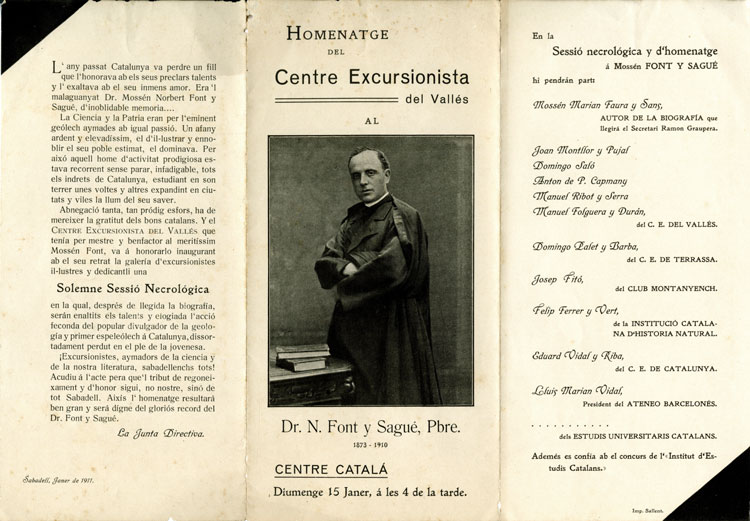
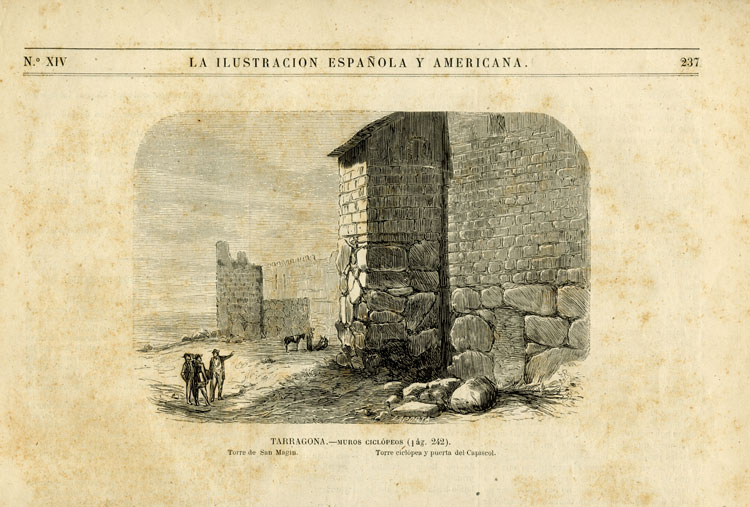

Eduard Toda, alter ego of a mummy. Egyptian Museum (Cairo, Egypt). Between 1884 and 1886.
Víctor Balaguer Museum Library.
Programme of the meeting held to mark death of Dr. Pbre. N. Font i Sagué. 15 January 1911.
MAC Archive.
Colominas Collection.
Bonaventura Hernández Sanahuja. Muros ciclópeos de Tarragona. La Ilustración Española y Americana. 15 May 1871.
MAC Library.
Pere Alsius, Ensaig Históric sobre la vila de Banyolas. Barcelona, 1872.
MAC Library.
Empúries... always Empúries!
In 1846 the Girona Provincial Commission for Monuments excavated the ruins of Empúries for a period of seven months, during which time the sarcophagus known as ‘Les Estacions’ was unearthed. This work was made possible by support from the Girona Provincial Council (La Diputació de Girona) even though, despite support from the Girona Jefe Político (post equivalent to that of a civil governor) in 1841, the project had been rejected by the Spanish Royal Academy of History. A new idea of the importance of the site, however, emerged after a publication of a work by Botet i Sisó and the beginning of uncontrolled excavations in 1901 by the Spanish Hydrological and Forest Service as part of a scheme to fix the coastal sand dunes.
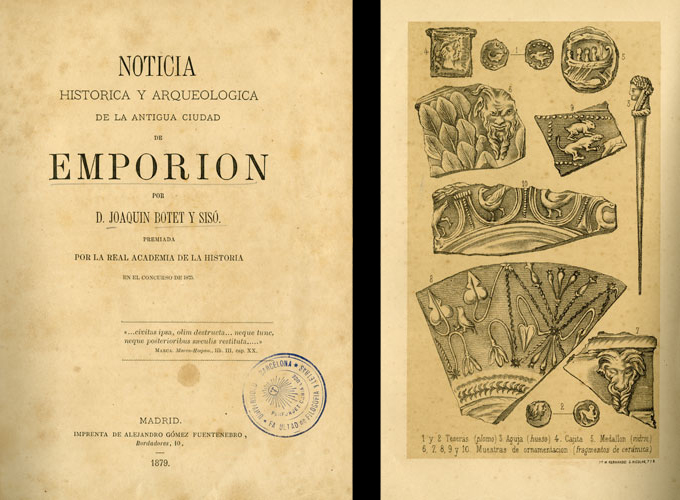
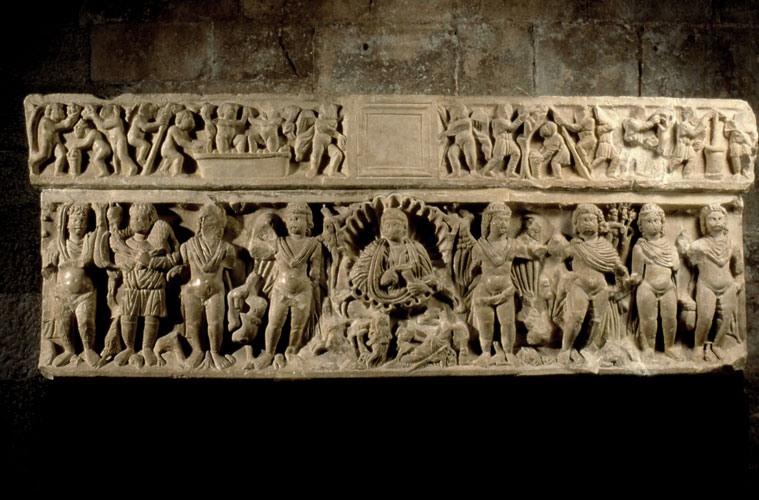
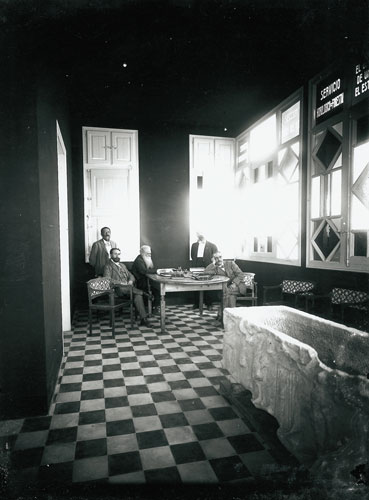
Cover and engravings from the book Noticia historica y arqueologica de la antigua ciudad de Emporion, de Joaquim Botet i Siso, Madrid, 1879.
MAC Library.
Sarcophagus known as ‘Les Estacions’. Empúries.
MAC Girona.
Engineers from the Spanish Hydrological and Forest Service in the main room of the Sant Martí d’Empúries Forest Centre. In the foreground, the Roman sarcophagus found during the work to consolidate and fix the coastal sand dunes.
Photo Esquirol.
L’Escala Historical Archive. Esquirol Collection.
Archaeology and scientific natural history
The Catalan Natural History Association (Associació Catalanista d’Excursions Científiques), set up in 1876, was the precursor of a walking club, the Centre Excursionista de Catalonia (CEC), that was formed in 1890. This institution would come to be heavily involved in the deepening of knowledge of Catalonia as a country and, naturally, of its origins. Illustrious members of Catalan academic and scientific institutions such as Lluís Marià Vidal and Antoni Rubió i Lluch, closely linked to the field of archaeological research, were to become presidents of the CEC.
Many of these researchers – who often also had ties with Catalan political and/or civil entities – would publish articles in the CEC’s bulletin, which became the mouthpiece not only for the institution’s activities but also for research of all type in Catalonia and neighbouring regions.
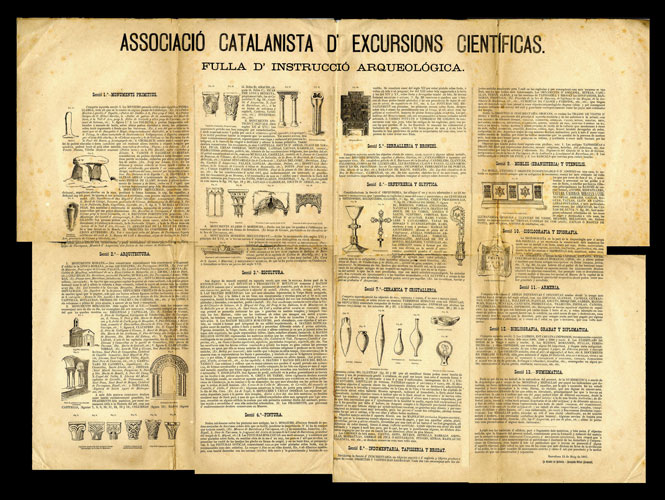

Poster printed by the Associació Catalanista d’Excursions Científicas (Catalan Association of Natural History and Walking Clubs), Fulla d’Instrucció Arqueológica. Barcelona, 15 May 1881.
MAC Archive.
Colominas Collection.
Reproduction of the cave paintings at Roca dels Moros near El Cogul published by Ceferí Rocafort in the bulletin of the Centre Excursionista de Catalonia in 1908.
MAC Library.